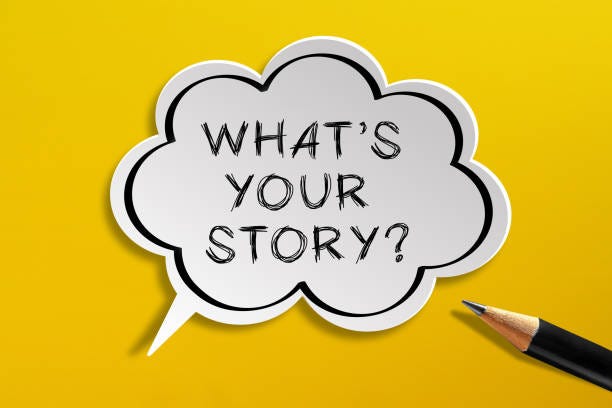When I first started my journey in advocacy, I didn’t fully appreciate the immense power of storytelling. As someone who has always relied on data and strategy, I thought numbers were what drove change. And while facts and figures play an important role, I quickly learned that the most powerful tool in creating systemic change is something far more personal—our stories.
Over the years, I’ve seen firsthand how personal narratives can break down barriers, challenge deeply ingrained biases, and inspire action in ways that data alone cannot. As a queer Arab American woman who has faced adversity, from surviving conversion therapy to overcoming homelessness, my own story has shaped my advocacy and connected me to the communities I serve. Today, I want to share how storytelling can be a transformative force for change and how you can harness its power in your own life.
Stories Connect Us
At its core, storytelling is about connection. It’s about finding those threads of shared humanity that bind us together, even when our experiences seem vastly different. When I led the campaign to ban conversion therapy in Colorado, it wasn’t the statistics about the harm caused by these practices that ultimately moved legislators—it was the stories.
We brought survivors to the forefront, allowing them to share their deeply personal experiences of pain and resilience. Hearing someone speak about the trauma of being told they were broken or unworthy simply because of who they are has a way of cutting through politics and rhetoric. Those stories made it impossible to look away. They reminded people that behind every policy is a human being whose life is impacted.
Stories like these don’t just inform—they make people feel. They create empathy, and that empathy is often the catalyst for change.
Turning Vulnerability into Strength
For many of us, sharing our stories feels risky. Vulnerability can be intimidating, especially when it means exposing parts of ourselves that we’ve worked hard to protect. I understand this deeply. Opening up about my experiences with conversion therapy, for example, wasn’t easy. It meant revisiting painful memories and putting myself in a position where others might judge or dismiss me.
But what I’ve learned is that vulnerability is not a weakness—it’s a strength. Sharing my story has allowed me to connect with others who have experienced similar struggles. It has also helped people who have never faced those challenges understand the urgency of the issues I fight for.
When we share our stories, we create space for others to do the same. We give people permission to be vulnerable, to feel seen, and to recognize that they are not alone. That collective power is what drives movements forward.
Shaping Policy with Personal Narratives
Storytelling isn’t just about connecting with individuals—it’s also a powerful tool for shaping policy. When I worked on marriage equality campaigns, we didn’t just rely on legal arguments. We shared the stories of couples whose lives were directly impacted by the lack of recognition for their relationships.
I remember working with Jim Obergefell, the plaintiff in the landmark Supreme Court case Obergefell v. Hodges. His story of love and loss touched hearts across the country and played a pivotal role in shifting public opinion. Jim’s courage in sharing his experience reminded people that marriage equality wasn’t just a political issue—it was a deeply human one.
By centering personal narratives, we were able to make the abstract concrete. We turned what could have been a theoretical debate into something tangible and real. That’s the power of storytelling—it has the ability to humanize even the most complex issues.
Tips for Harnessing Your Own Story
Whether you’re an advocate, a leader, or simply someone looking to make a difference, your story matters. Here are a few tips for harnessing the power of your personal narrative:
- Be Authentic: People connect with authenticity. Don’t be afraid to share your struggles and triumphs honestly. The more real you are, the more impactful your story will be.
- Know Your Audience: Tailor your story to resonate with the people you’re speaking to. Think about what they care about and how your experience can connect with their values.
- Focus on Impact: Highlight the “why” behind your story. What do you want people to take away? How can your experience inspire action or change?
- Pair Stories with Data: While stories are powerful, they’re even more effective when paired with facts. Use your narrative to create an emotional connection, then back it up with evidence to drive your point home.
Practice and Refine: Storytelling is a skill. The more you share your story, the more confident and effective you’ll become.
The Ripple Effect of Storytelling
One of the most rewarding parts of my work is seeing the ripple effect that storytelling creates. When one person shares their story, it inspires others to do the same, creating a chain reaction of empathy and action.
I’ve seen this ripple effect in action countless times. I’ve watched legislators change their votes after hearing from a constituent whose life was impacted by a policy. I’ve seen communities rally together after hearing a story that moved them to tears. And I’ve witnessed individuals find their own voice after being inspired by someone else’s courage.
Moving Forward Together
As we navigate a world filled with challenges, I believe storytelling is more important than ever. It reminds us of our shared humanity, breaks down the walls that divide us, and gives us the courage to fight for what’s right.
So, what’s your story? What experiences have shaped who you are and what you care about? Whether you’re advocating for a cause, building relationships, or simply trying to make sense of your own journey, your story has the power to create change.
Let’s continue to share, to listen, and to build a world where everyone’s voice is heard. Together, through the power of storytelling, we can create the systemic change we’ve been fighting for.




